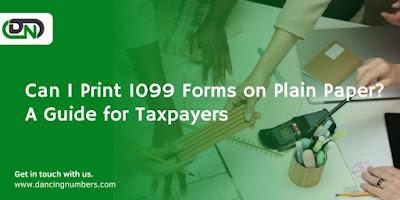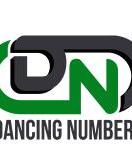As tax season approaches, many taxpayers find themselves wondering about the logistics of filing various tax forms, including the essential 1099 forms. Among the common questions that arise is whether it is permissible to print 1099 forms on plain paper. In this guide, we'll delve into this query and provide clarity on the matter.

Understanding the 1099 Form
Before addressing the printing aspect, let's briefly outline what a 1099 form is. The 1099 form is a series of documents used to report various types of income received throughout the tax year other than wages, salaries, and tips. These could include income from interest, dividends, self-employment earnings, and more.
Businesses, individuals, or entities that pay these types of income are required to issue 1099 forms to the recipients and file copies with the IRS. Recipients, in turn, use these forms to report the income on their tax returns.
Printing 1099 Forms
Now, back to the question at hand: Can you print 1099 forms on plain paper? The short answer is yes, but with some important caveats. The IRS does allow taxpayers to print 1099 forms on plain paper as long as certain requirements are met.
IRS Guidelines
According to the IRS guidelines, if you choose to print 1099 forms on plain paper, they must adhere to specific standards to be acceptable for filing and distribution. These standards include:
1. Legibility: The printed forms must be clear and legible, ensuring that all information is easily readable.
2. Size: The forms must be printed at the actual size specified by the IRS, which is typically 8.5 inches by 11 inches.
3. Format: The layout and format of the printed forms must match the official IRS specifications. This includes the placement of boxes, fields, and other elements.
4. Ink: The forms must be printed using black ink, as this provides the best readability and ensures that the forms can be properly scanned and processed by the IRS.
5. Alignment: All data fields, including the payer's information, recipient's information, and income details, must be properly aligned on the printed forms.
Software Solutions
To ensure compliance with IRS guidelines and streamline the process of printing 1099 forms, many taxpayers opt to use specialized tax software or online platforms. These solutions often provide templates for 1099 forms and automatically populate them with the necessary information. They also ensure that the forms are printed correctly and meet all IRS requirements.
Advantages of Printing on Plain Paper
Printing 1099 forms on plain paper offers several advantages for taxpayers:
1. Cost-Effective: Printing on plain paper eliminates the need to purchase pre-printed forms, which can be more expensive.
2. Convenience: Plain paper is readily available and can be printed on demand, allowing for greater flexibility and convenience.
3. Customization: Printing on plain paper allows taxpayers to customize the forms to suit their needs, such as adding additional information or branding.
4. Environmentally Friendly: Using plain paper reduces waste and is more environmentally friendly than using pre-printed forms.
Final Considerations
While printing 1099 forms on plain paper is permissible, taxpayers should exercise caution to ensure compliance with IRS guidelines. Failure to meet the required standards could result in processing delays or rejection of the forms by the IRS.
Before printing 1099 forms on plain paper, taxpayers should carefully review the IRS specifications and consider using software solutions to simplify the process and ensure accuracy. By following these guidelines, taxpayers can effectively report their income and fulfill their tax obligations without the need for expensive pre-printed forms.
conclusion
yes, you can print 1099 forms on plain paper, but it's crucial to do so in accordance with IRS requirements. With the right approach and attention to detail, printing 1099 forms on plain paper can be a cost-effective and efficient option for taxpayers during tax season.

